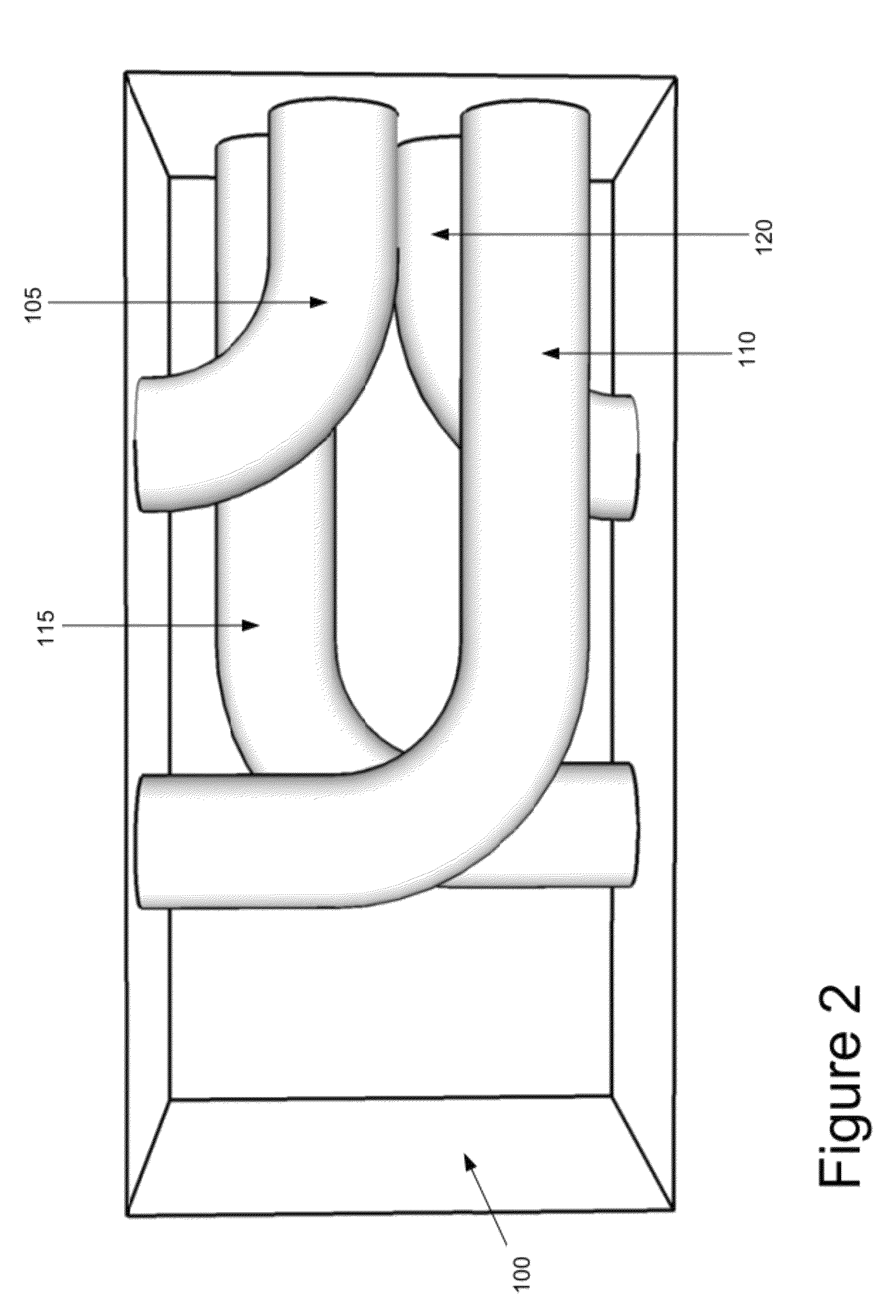Intervertebral fusion device and method of use
a fusion device and vertebral technology, applied in the direction of internal osteosynthesis, osteosynthesis devices, prosthesis, etc., can solve the problems of structural integrity, lost productivity, and often failed approaches, and achieve the effect of enhancing stability and enhancing progressive solid bone fusion
- Summary
- Abstract
- Description
- Claims
- Application Information
AI Technical Summary
Benefits of technology
Problems solved by technology
Method used
Image
Examples
embodiment 1600
[0055]In FIGS. 16, 17, and 18, an alternate fusion member embodiment 1600 comprising two curved semicircular channels 1610 and 1620 is depicted with curved fusion needles 1630 and 1640 fully advanced through these channels into the marrow spaces of the vertebral bodies (not pictured) below and above the block. In FIG. 18, PMMA has been injected and formed collections 1800 and 1810 adjacent to the perforated, contoured tips of needles 1630 and 1640 within the marrow spaces of the adjacent vertebral bodies (not pictured).
[0056]B. Channels Traversing in all Three Dimensions
embodiment 1900
[0057]Another shape that the channels can take is to have a shape that traverses in x-, y-, and z-directions. FIGS. 19, 20, and 21 depict an alternate fusion member embodiment 1900 with nonparallel angled curved channels 1910 and 1920 and nonparallel angled curved channels 1930 and 1940 extending to inferior and superior block faces, respectively.
[0058]FIGS. 22 and 23 depict an alternate embodiment of a fusion member with channels that traverse in all three directions. As shown in these figures, the block 2200 includes two oblique channels 2210 and 2220 that are traversed by needles 2230 and 2240, which are rectangular in cross-sectional profile. The distal openings of these oblique, nonparallel channels 2210 and 2220 are located at or near the geometric centers of the inferior and superior block faces. FIG. 24 provides a detailed view of one fusion needle embodiment depicting the direct communication of the central needle lumen 2400 with perforations along the needle shaft as well ...
PUM
| Property | Measurement | Unit |
|---|---|---|
| outer diameter | aaaaa | aaaaa |
| flexible | aaaaa | aaaaa |
| circumference | aaaaa | aaaaa |
Abstract
Description
Claims
Application Information
 Login to View More
Login to View More - R&D
- Intellectual Property
- Life Sciences
- Materials
- Tech Scout
- Unparalleled Data Quality
- Higher Quality Content
- 60% Fewer Hallucinations
Browse by: Latest US Patents, China's latest patents, Technical Efficacy Thesaurus, Application Domain, Technology Topic, Popular Technical Reports.
© 2025 PatSnap. All rights reserved.Legal|Privacy policy|Modern Slavery Act Transparency Statement|Sitemap|About US| Contact US: help@patsnap.com



